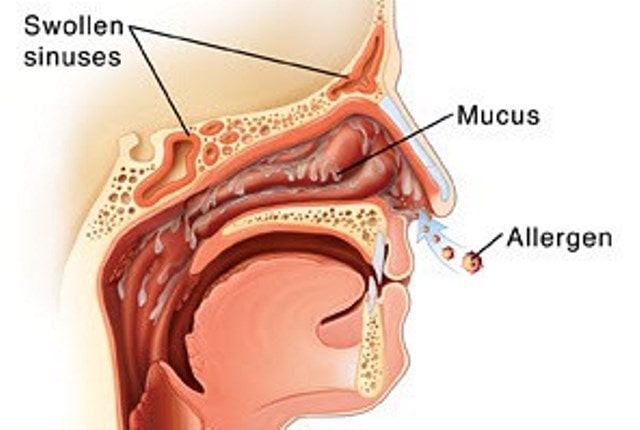During ovulation some women experience spotting which might be light or heavy. Is it normal to experience spotting during ovulation, around or after ovulation? What about brown spotting during ovulation? All these issues and others have been tackled in this article.
Spotting before Ovulation
Ovulation is when a mature egg breaks away from the follicle to find its way to the uterus through the fallopian tube. Spotting refers to the light bleeding that takes place in a woman at around that time. To understand how this happens, it is important to have knowledge on some phases of the menstrual cycle.
The first phase of the monthly cycle is known as the follicular stage. In this stage, the predominant hormone is estrogen. It is responsible for the growth of the uterine wall. The ovarian follicles mature in this stage and are ready to release an egg. Only one dominant follicle reaches maturity. This is the one that will contain the ovum that should be fertilized.
After the follicular phase, the ovulation stage sets in. This is when the egg detaches from the follicle and is pushed through the fallopian tube to the uterus.
The last phase is known as the luteal stage and is the one that follows ovulation. The most dominant hormone in this phase is progesterone. This one is responsible for holding the uterine lining and making it thick. In this phase, the follicle stimulating hormone and the luteinizing hormones transform the dominant follicle from which the egg disintegrated into corpus luteum. Corpus luteum is responsible for producing progesterone, which in turn stimulates production of estrogen. These two inhibit production of the other hormones and thus trigger the onset of menstruation and the beginning of another cycle.
Just before ovulation, progesterone is yet to get to perform its function efficiently. It fails to hold the lining of the uterus up as it would at some point later in the cycle. This makes it (the lining of the uterus) to be shed leading to spotting before ovulation.
The cervix also opens up before ovulation. This makes it wide enough for any blood accumulated to be released easily.
Spotting before ovulation should not worry anyone. Instead, it should be included in the fertility chart as a possible indicator of ovulation. This way it can be used to signal to a couple whether to try or avoid conception as may suit their circumstances.
Spotting during Ovulation
This refers to some light bleeding experienced at the time when the egg is released from the ovarian follicles to the fallopian tubes. The spotting during ovulation may be because of a number of things. These include:
When ovulation is taking place, the egg has to rupture the walls of the follicles to get a way through to the nearest fallopian tubes. The rupturing leads to a hole being formed around the burst area. The injured tissues bleed and the blood is passed out of the body. The blood is then expelled from the body and is visible in the form of light spotting on the underwear. The spotting is mild and is either pink or brown but not red.
As the follicles grow and mature in readiness for ovulation, they produce more estrogen than they were able to at the beginning of the cycle. The increase in estrogen levels triggers an increase in luteinizing hormone, which is responsible for ovulation. This surge in luteinizing hormone and estrogen may cause a little spotting
Most of the time, spotting occurs during ovulation. It can be spotted as pink or brown patches that last up to three days at most. The spotting can be seen on the underwear, as you wipe out or when observing the cervical mucus.
Brown Spotting During Ovulation
Brown spotting when ovulating is normal. This is because as the egg bursts from the follicles, some bleeding is experienced. The hormonal imbalance caused by the upsurge of estrogen and luteinizing hormones may also lead to bleeding because of hormonal imbalance. The shedding of the wall of the uterus may also be as a result of insufficiency in the performance of hormones.
The blood discharged is not much and could pass unnoticed. However, if you are paying attention to the cervical mucus you may realize it is stained brown.
Blood starts to turn brown as it gets old. Since the bleeding experienced during ovulation takes some time before it gets out, this explains why it is brown.
Light Spotting during Ovulation
Spotting during ovulation should always be light. This is because it is no replacement for the menstruation period. Heavy bleeding during or after ovulation may be an indicator of some other issues that affect female fertility. These include:
- Implantation at the onset of pregnancy
- An early miscarriage
- Hormonal imbalance
- Problems with Intra Uterine Devices
- Vaginal injuries due to insertion of objects
- Cysts
- Fertility drugs
- Interference in the way contraceptives are taken. One could be taking an overdose or failing to follow the instructions.
The following can be deduced from general light spotting during ovulation:
- Spotting prior to periods could be as a result of implantation, impaired egg quality, cysts or luteal phase deficiency.
- Breakthrough bleeding is caused by spotting while one is on birth control pills.
- Spotting after ovulation could be because of cyst rapture, follicular rapture or hormonal imbalance.
- It is possible to experience pink and brown spotting during implantation.
- STDs could also be a cause for spotting
The knowledge on spotting is important. It can be used to achieve given family goals which include either trying to conceive or trying to avoid conception.
Spotting lasts for one or two days. Once it is noticed, it is important to start engaging in intercourse for those trying to conceive. To pinpoint ovulation even more, observing spotting while using an ovulation predictor kit to increase accuracy is advised.
It is important to be keen enough while looking out for spotting before, during and after ovulation. This will help in noticing when things are amiss. In case of heavy bleeding, medical attention should be sought.
Suggested Further Reading:
- Signs of Ovulation – Physical, Discharge, Cramping & Clomid
- How to calculate Ovulation Date & How to Track Ovulation
- Ovulation Test Kits – How Do Ovulation Kits Work, Do They Work
- Ovulation Predictor Kits – Best, Calendar, Calculator & Use
- How Long Do You Ovulate & How Long Does an Egg Last After Ovulation
- Ovulation Test Strips – Best, Cheap, Instructions to Use Them
- Brown or Pink Spotting After Ovulation – Days after Ovulation
- Ovulation Charts – Temperature, Printable & Free
- Ovary or Ovarian Pain during Ovulation and After Ovulation
- Cramping during Ovulation – Before, Mild or Band Cramps
- Bleeding During Ovulation – Meaning, Before and After


